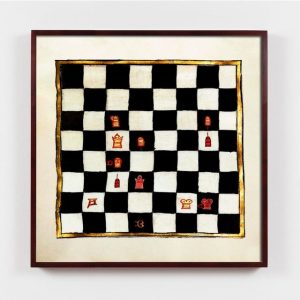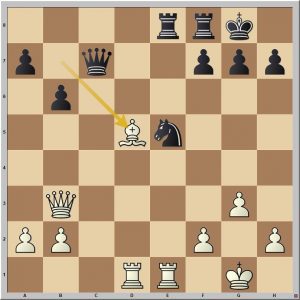
The term “strategic endgame” describes the wide range of positions that lie between the late middle game and the technical endgame.
Technical Endgame
- few pieces
- listed in books and databases
- unequivocal evaluations, proved by clear-cut variations
Stratecigal Endgame
- more pieces
- evaluation sometimes uncertain (+/- or +-?)
- general principals govern the position
Strategic Endgame or late Middlegame?
Here, the boundaries are somewhat fluent. Positions, in which queens and two pairs of minor pieces are swapped already have endgame character. Strategic endgames with a relatively large number of pieces are referred to as complex strategic endgames. I myself have no problem with letting some examples start at an early point in time, in order to study the transition from the middlegame.

The Benefit of studying strategic Endgames
1. Frequency
In contrast to technical endgames, they occur very frequently. Often the phase of the technical ending is not reached at all or if so, then with an overwhelming advantage for one side.
2. Learning Efficiency
Technical endgames place high demands on memory performance, as there are many key positions to be learned, together with the associated maneuvers. Strategic endgames, on the other hand, are governed by principles. Once you have internalized these, you can largely rely on your feelings.
3. Neglect
Many chess fans are well acquainted with their openings and, if they train seriously, also with the transition to the middle game. The late middle game, on the other hand, tends to be neglected. That is why there is a certain fluctuation in this phase of the game and many half points change hands. It is the hour of the experts with a comprehensive chess education.
4. Marginal Utility
If we deal with neglected areas of knowledge, there is a high marginal utility. In contrast to areas that are well known to us, where we are concerned with refining details, we can make great progress here by absorbing elementary knowledge.
5. Relevance for the Opening
Openings with long-lasting pawn structures often lead to typical strategic endgames. Since these appear on a regular basis, an intensive study is worthwhile here.
General Structure of the Material
- 32 Principles
- Even Material Distribution
- Material Imbalances
- Positional Sacrifices
- Opening-specific Endings
- Universal Pawn Structures
The participants receive an 26 page document, containing the fine structure.
Mode
At the moment, the material is only offered within closed webinars.
Big group: EUR 100 per hour
Group with up to 3 participants: EUR 100 per double-hour

